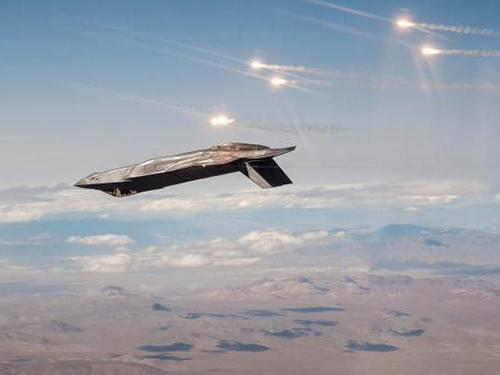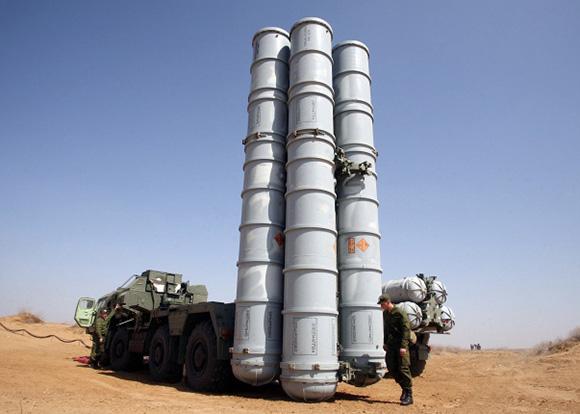Iran will have its S-300. The contracts with Moscow, although not yet formally ratified, are already in force. The news was picked up by the main Russian media.
"One of the most sophisticated anti-aircraft systems in the world will arrive in Iran nine years late." The 800 million dollar contract for five S-300 defensive systems was signed in the 2007. The supply was then frozen following sanctions imposed by the United Nations on the Islamic Republic. Supply again called into question after the nuclear agreements signed last April between the world powers and Iran.
Last August, commenting on the 'S-300' affair, Deputy Foreign Minister Mikhail Bogdanov, gave for certain the delivery of anti-aircraft systems by the end of the year. The final agreement was signed in the past few hours. Therefore, even the "technical details" that until a few months ago prevented the delivery of S-300 systems were overcome.
The timing is still curious. The agreement, in fact, comes a few hours before the meeting between Prime Minister Benjamin Netanyahu and US President Barack Obama, in Washington, on the next ten-year military assistance program. Israel has tried, in vain, to block the sale of S-300 systems. The reason is easy to understand: a defensive line, deployed close to Tehran's nuclear plants (considered the first targets in the event of an Israeli attack), would almost certainly cause heavy losses. If S-300 were to get hold of Hezbollah, Israel's regional air supremacy would be challenged.
Iranian S-300
The 9M82M missile known as "Antey-2500", (code-named NATO SA-23 Gladiator Giant) is specifically designed for tactical defense against medium-range ballistic missiles or enemy aircraft. He can follow up to 100 targets, being able to hire 12 / 24 at a distance of 200 kilometers (124 miles) and at height of 27 kilometers (about 17 miles). The SA-23 is considered immune to most Western ECM countermeasures with a operational tangency of thirty thousand meters. The Antey, once put on line, does not require maintenance for at least ten years, while its warheads are considered able to defeat even the most modern western ballistic missiles. It is driven by an inertial system with half-way radio updating, while in the terminal phase it relies on a semi-active radar. Probably the delivery of at least one 'V4' system, with a range of 400 km. For the Russians, there is no aircraft (including the B-2, the F-22 and the F-35) capable of dealing with an S-400 system with impunity.
Israel's shopping list
Israel has already bought more than 30 F-35: it could reach up to 75 (or so they hope from the White House). But Israeli air forces want more F-15. Israel has approximately 65 Eagle online between the A / B / C / D and thirty F-15I "Ra'am" versions. The IAF really wants other "Thunders" as a workhorse of the Israeli air forces. The United States has also approved the supply of Osprey, a convertiplane capable of reaching Iran. Complete the "shopping list" in the US inventory, the Massive Ordnance Penetrator, the 14 thousand-pound bomb capable of pulverizing the deep armored bunkers. The US administration is mainly interested in financing Israel's missile defense systems, maintaining the efficient but expensive Iron Dome. The missile upgrade includes a new defensive line to counter threats from neighboring Gaza, southern Lebanon, Syria and Iran. The new Iranian-Russian axis requires the strengthening of the Israeli-American one.
Can five S-300 systems represent a "game changer?"
The S-300 (and S-400) systems represent the highest point of Russian ground-to-air defense systems. They are designed to protect areas of strategic importance. Each battery can attack more than half a dozen targets simultaneously. The main difference from the previous strategic SAM generation is that the S-300 is a mobile system. Not only: the S-300 are networked. This means that in an integrated air defense system, the S-300 represents an impossible challenge to overcome for all existing fourth generation aircraft. F-15, F-16 and F / A-18: they would have little hope of getting out of an area protected by S-300.
The best option would be to use the "Global Strike Task Force": a combined task force of F-22 and B-2. The second option, instead, involves a massive attack of JASSM-ER missiles (where ER stands for Extended Range) in a context that would require the presence of EA-18G Growlers. The problem, in the second option, is to preload missile targets. The enemy, in fact, could move the S-300 by detecting the launch of the missiles.
F-35 vs S-300
 Let's start from the assumption that a similar comparison can be made in a short time. The F-35 will reach part of its 'Warfighting' maturity in five to six years. The S-300, on the other hand, has never fired a single shot at a real enemy. So, at the moment, only speculation. Of the two systems we know "almost" everything. Theoretically the F-35 should have some advantages. Theoretically, the JSF has been designed with the most reliable absorbing radar (RAM) in history. Unlike the surfaces of the F-22 made of aluminum and then coated, those of the F-35 were built in composite carbon fiber. The RAM coating, therefore, is not applied but already inherent in the structure of the hunting. This should reduce its RCS and decrease the chances of being intercepted by enemy radars. But the key to the survival of the F-35 should be its AESA radar, 'Active Electronically Scanned Array, capable of mapping hundreds of targets in different directions and thousands of times per second. As well as, finally, its capacity for electronic warfare. However, speculations remain on the card.
Let's start from the assumption that a similar comparison can be made in a short time. The F-35 will reach part of its 'Warfighting' maturity in five to six years. The S-300, on the other hand, has never fired a single shot at a real enemy. So, at the moment, only speculation. Of the two systems we know "almost" everything. Theoretically the F-35 should have some advantages. Theoretically, the JSF has been designed with the most reliable absorbing radar (RAM) in history. Unlike the surfaces of the F-22 made of aluminum and then coated, those of the F-35 were built in composite carbon fiber. The RAM coating, therefore, is not applied but already inherent in the structure of the hunting. This should reduce its RCS and decrease the chances of being intercepted by enemy radars. But the key to the survival of the F-35 should be its AESA radar, 'Active Electronically Scanned Array, capable of mapping hundreds of targets in different directions and thousands of times per second. As well as, finally, its capacity for electronic warfare. However, speculations remain on the card.
For Russians, no US fifth-generation aircraft can operate in an airspace controlled by the S-300 / S-400. For the United States, instead, the F-35 should be able to defeat the S-300 threat (even without global support).
[photo: ITAR-TASS / Lockheed Martin]












